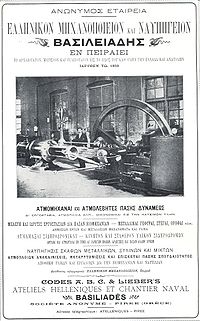
Piraeus is a port city within the Athens urban area, in the Attica region of Greece. It is located eight kilometres (5 mi) southwest of Athens' city centre, along the east coast of the Saronic Gulf in the Athens Riviera.
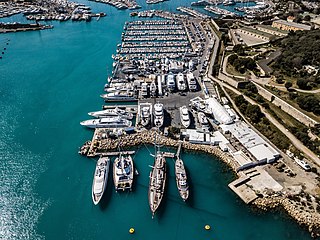
A shipyard, also called a dockyard or boatyard, is a place where ships are built and repaired. These can be yachts, military vessels, cruise liners or other cargo or passenger ships. Compared to shipyards, which are sometimes more involved with original construction, dockyards are sometimes more linked with maintenance and basing activities. The terms are routinely used interchangeably, in part because the evolution of dockyards and shipyards has often caused them to change or merge roles.

The National (Metsovian) Technical University of Athens, sometimes known as Athens Polytechnic, is among the oldest higher education institutions of Greece and the most prestigious among engineering schools. It is named Metsovio(n) in honor of its benefactors Nikolaos Stournaris, Eleni Tositsa, Michail Tositsas and Georgios Averoff, whose origin is from the town of Metsovo in Epirus.

The Hellenic Railways Organisation or OSE is the Greek national railway company which owns, maintains and operates all railway infrastructure in Greece with the exception of Athens' rapid transit lines. Train services on these lines are run by Hellenic Train S.A., a former OSE subsidiary, Rail Cargo Logistics Goldair, Pearl and Grup Feroviar Român.

Drapetsona is a coastal town, a suburb and a former municipality in the southwestern part of the Piraeus regional unit. Since the 2011 local government reform it is part of the municipality Keratsini-Drapetsona, of which it is a municipal unit.

Agriculture in Greece is deeply rooted in history, and based on its Mediterranean climate. This practice encompasses a wide array of crops, including olives, grapes, citrus fruits, cereals, and vegetables, with a notable emphasis on olive oil production, establishing Greece as a global leader in this industry. The country's vineyards produce tons of grapes and also yield renowned wines. Greece also produces a wide variety of livestock products. Fisheries are playing an important role while forestry plays a secondary role.
Hellenic State Railways or SEK was a Greek public sector entity which was established in 1920 and operated most Greek railway lines until 1970.
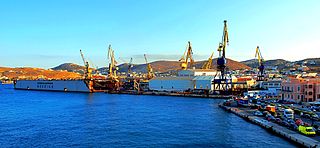
Neorion is one of the oldest Greek heavy industries, located in Ermoupolis, on the Greek island of Syros. Today, it is one of the few remaining major industrial corporations in what used to be the industrial and commercial center of Greece, before being eclipsed by Piraeus in the late 19th century.

Pyrkal, founded in 1874, is one of the oldest defense industries in Greece and the main producer of ammunition and explosives in the country. Throughout its history, it has been one of the largest Greek companies, in fact, a reflection of the history of Greek Industry itself. Moreover, since its foundation, it has been a crucial supplier during all the military conflicts the nation faced, and historically a well-established exporter to five continents.
The Greek Steamship Company was the first steamship company in modern Greece. Established on the Aegean island of Syros, the company provided transportation links within Greece and to Europe and the Middle East. Eventually, as Syros prosperity declined, the company went out of business.
R. & W. Hawthorn, Leslie and Company, Limited, usually referred to as Hawthorn Leslie, was a shipbuilder and locomotive manufacturer. The company was founded on Tyneside in 1886 and ceased building ships in 1982.
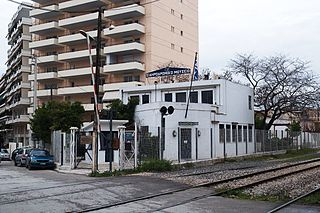
The Railway Museum of Athens, Greece, was founded by the Hellenic Railways Organisation (OSE) in 1978.

Piraeus, Athens and Peloponnese Railways or SPAP was a Greek railway company founded in 1882, which owned and operated the 1,000 mm Piraeus–Patras railway line connecting Piraeus and Athens to Peloponnese. The company was nationalized in 1954 and absorbed by the Hellenic State Railways in 1962.
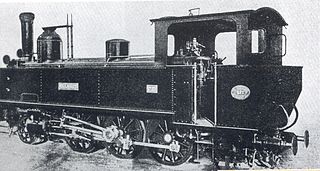
Athens–Lavrion Railway was a 1,000 mmmetre gauge railway line connecting downtown Athens with Eastern Attica and the mining town of Lavrion in Greece.
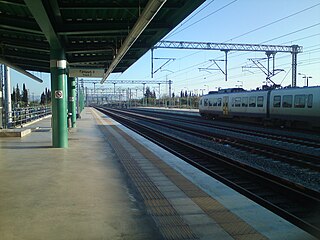
Kiato railway station is a station in Kiato in the northern Peloponnese, Greece. The station is located 1 km west of the town, near the A8 motorway between Athens and Patras. It was opened on 9 July 2007. The station is served by the Athens Suburban Railway towards Piraeus and Hellenic Train local services to Aigio. It should not be confused with the now-closed station on the old Piraeus–Patras railway, which is located northeast of the current station, closer to the coast of the Corinthian Gulf.
Athena was a 50 m long passenger steamship built in 1893 at the Syros Shipyards. It was the first metal steamship built at this shipyard, and it represented an example of the brief growth of Greek shipbuilding in the late 19th century, before its decline in the next decades. The ship was powered by a steam engine built by the Ifaistos machine works in Piraeus, the second largest machine builder in the country at the time; Ifaistos was founded by John McDowall, a Scottish entrepreneur who had worked in Greece and had obtained Greek citizenship, and was the main builder of ship steam engines in Greece. This ship sank in 1946 in a tragic accident off the Greek island of Syrna that claimed the lives of Jewish refugees.

Anestis Delias was a Greek bouzouki player, composer and singer of rebetiko. Delias was from a musical family of Smyrna in Anatolia, who arrived on the Greek mainland as a young refugee during the Greco-Turkish war. He became an accomplished player of the bouzouki and joined with other musicians in the refugee suburbs of Athens and Piraeus, creating music in the 1930s that exemplifies the genre known as Piraeus rebetiko. Delias played on early rebetiko recordings, including songs of his own composition released under his name. He became addicted to heroin and died of starvation, aggravated by his drug dependency, during the Nazi occupation of Greece. Despite his short life, Anestis Delias was an important figure and an influential exponent of the Piraeus-style of rebetiko.

Patras railway station is a railway station in Patras in the northwestern Peloponnese, Greece. The station is located in the center of the city, beside the north port on Piraeus–Patras line and Patras–Kyparissia line and is severed by both Proastiakos Patras Services. Pending the completion of the Athens Airport–Patras railway, it is also the starting point of TrainOSE bus lines to Aigio, Diakopto and Kiato, where connecting train services to Athens Airport and Piraeus are available. Diakopto is also the terminus of the unique rack railway to Kalavryta.
The Kanellopoulos Institute of Chemistry and Agriculture is a former research institute in Piraeus, Greece, which operated between 1938 and 1984 in affiliation with the Drapetsona-based Greek Company of Chemical Products and Fertilisers.


